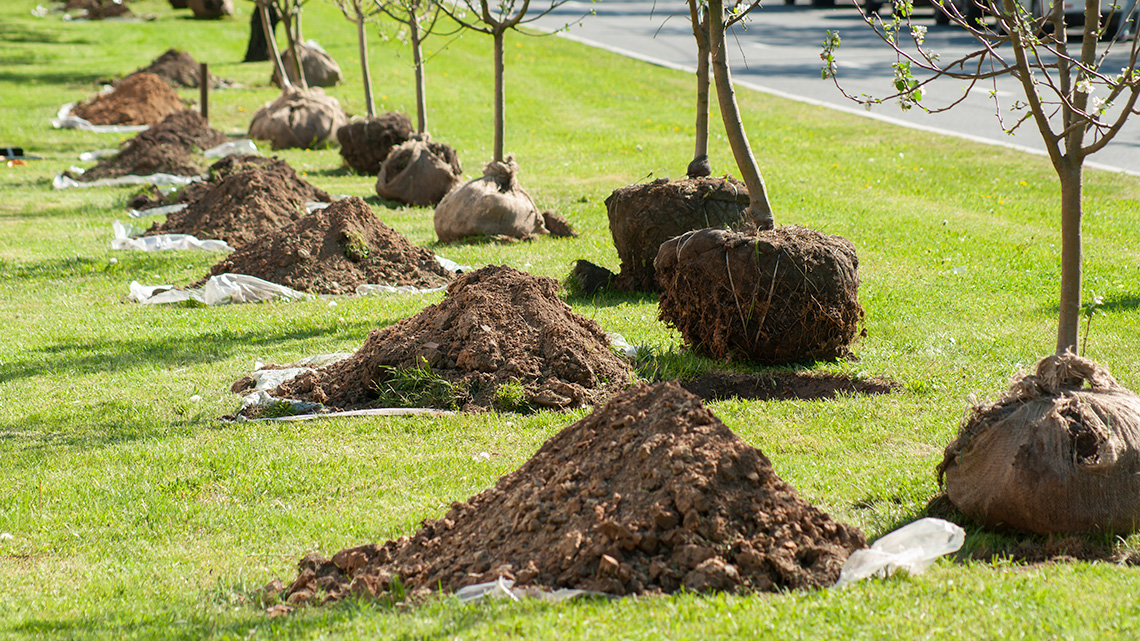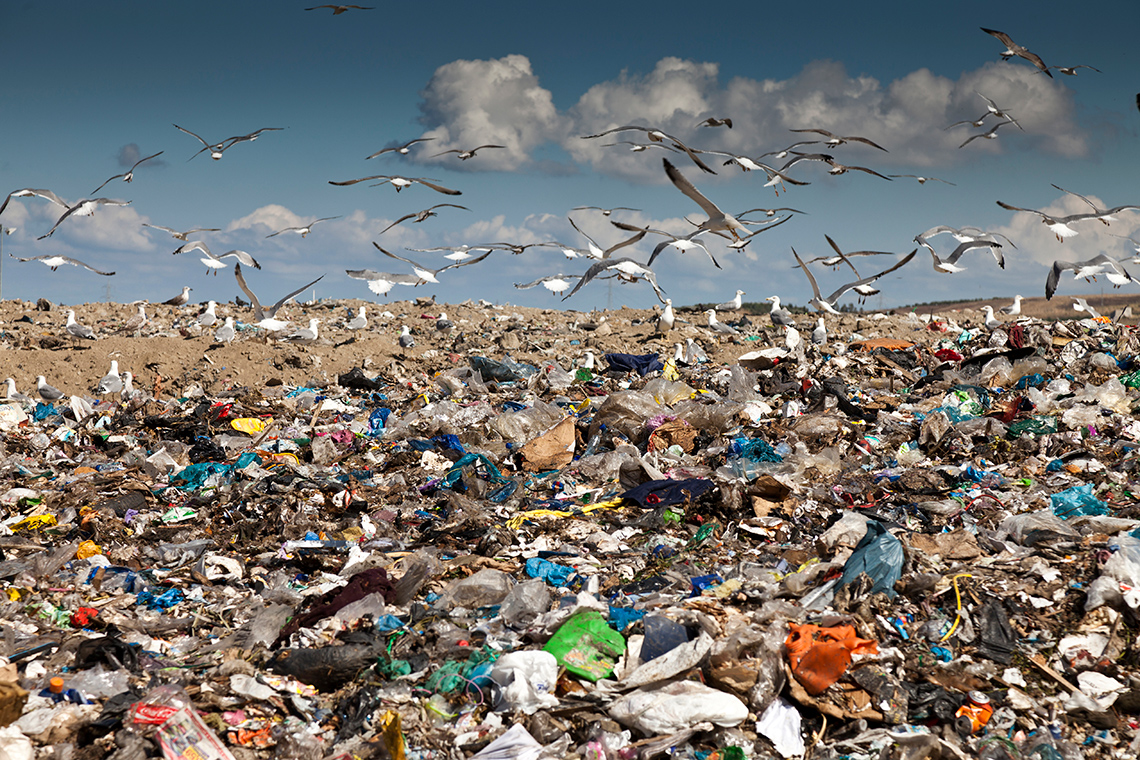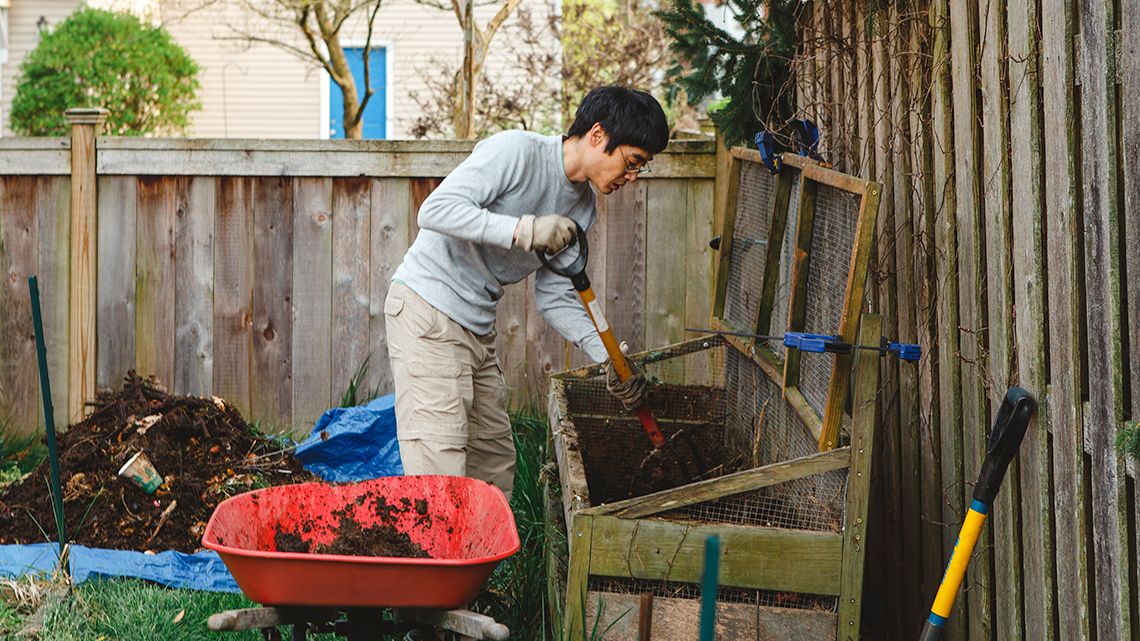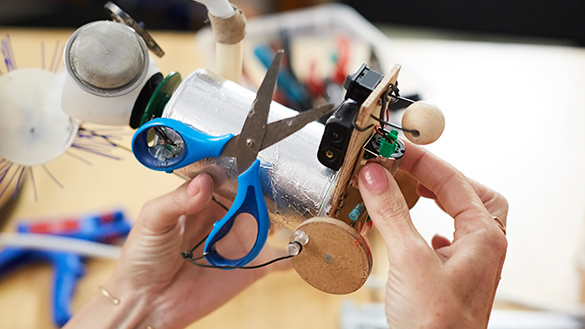Minds On
Evolution of a system
Whether or not you own many of them, modern society depends on a great number and variety of modern devices and systems.
The needs of society can influence the evolution of established systems or demand the introduction of new ones. Large or small, mechanical or natural: all systems consist of many components that can be studied and improved.

Brainstorm
Brainstorm
Think of a product or device that you use in your everyday life.
Consider:
- How has the device or product evolved over time? Has it always been this way?
- How do you predict it might change in the future? Why?
Brainstorm how that device or product has changed over time.
Record your ideas in a notebook or another method of your choice.
You may also create a flowchart to record your ideas and thoughts.
Action
Efficient systems

Efficiency is the ability to do something without wasting energy, effort, or raw materials. There are many different factors that can affect the efficiency of both physical and social systems.
Press the following tabs to explore more about physical and social systems.
A physical system is a group of physical parts that work together to perform a specific task.
The efficiency of a physical system, like harvesting (cutting down) trees, can be affected by whether it is done manually (by a human with an axe) or with a machine. It could also be affected by how many people are working on harvesting trees – a single person would be less efficient than a group of people.
The most efficient way to harvest trees would be to use a machine, such as a tree harvester, which is a machine that would be able to quickly cut down thick trees, take branches off, and stack the logs.
However, efficiency is not always the best for the environment, and a tree harvesting machine could cause harm to the environment.
A social system is a group of people who join together to accomplish certain tasks.
The efficiency of a social system, like a restaurant, can be affected by the dynamics of the workplace. Fast food restaurants are made to be very efficient. Workers each have one task to do, and they do it very quickly. The restaurant’s efficiency could be reduced if someone was away from work that day, or not doing their job efficiently.
If a restaurant cannot evolve and become more efficient, it could risk being shut down.
Student Success
Think
Let’s think about what you already know on this topic by responding to the following questions:
- What is efficiency? How is related to systems?
- Provide an example of an efficient system? What makes it efficient?
- Is efficiency always important for a system? In what situation might it be better not to strive for efficiency?
- All systems change or evolve over time. What drives these changes?
Record your ideas in a notebook or another method of your choice.
Press ‘Let’s Check!’ to access possible responses.
- Efficiency is the ability to do something without wasting effort, energy, or materials. Systems are sometimes measured by their efficiency.
- Responses may vary. One example is a heating and colling system – an efficient heating and cooling systems would turn on and off automatically as needed. This is more efficient than running all day/night and wasting resources, and the machine would be working less.
- While efficiency is one measure of a system performance, it is not the only one. It is important to consider how the system is impacting everything around it (i.e., the environment, humans, animals, etc.) and weigh the costs and benefits of running a machine efficiently. If the costs outweigh the benefits of running the machine efficiently, then perhaps this would not be the best situation to strive for efficiency.
- Changes to living conditions, social conditions, and new technologies all contribute to the ways that systems evolve.
Note to teachers: See your teacher guide for collaboration tools, ideas and suggestions.
Day-to-day systems

Life in the twenty-first century relies on many systems.
Let’s consider two different systems we all need: waste management and telephone communications. We will explore the recycling, composting, and disposing of the trash system, as well as the voice/data communication system.
Waste management
Consider the waste management system (garbage, recycling, and compost) that exists in your community.
What does it involve?

People produce mountains of waste each year. In fact, studies show that Canadians produce almost 31 million tonnes of waste every year. Most of this garbage gets buried in landfill sites, which can increase environmental and health impacts.
As populations continue to grow, there is an increasing demand for better waste management solutions.
The Waste Hierarchy
Check out the following activity to create a sorting waste hierarchy.
Did You Know?
Did you know?

As the world’s population continues to grow, the waste management systems continue to evolve, with a focus on sustainability.
For example, turning waste into energy and putting responsibility on retailers to create products that are biodegradable and “circular,” meaning they can be reused, rather than dumped in a landfill, when a consumer is finished with them.
Telephone and wireless data
Telephone systems were first invented in the late 1800s and have undergone many changes since then. Many years ago, a telephone system was designed with a “rotary dial” and was only used to make phone calls.
As society evolved, so did telephone systems.
Now, a “smart phone” is completely electronic, smaller, and they have many different purposes beyond making phone calls, such as: taking photographs, sending messages, playing games, listening to music, etc.


Student Success
Evolving systems
How did social factors influence the evolution of the telephone?
At the beginning of the telephone system, in the late 1800s, society conversed through letters and telegrams. The need for a communication system that required voices was not seen as important.
Quickly, the benefits for doing business, calling for medical help, chatting with friends, and making plans became clear and the telephone system made that easier.
Over the years, the main purpose of the telephone system has remained the same, but the technology has continued to evolve, with each step enhancing the capabilities of the devise as well as the convenience.
So, as systems evolve, such as the telephone system, do you think people become more dependent or reliant on them? Why or why not?
Record your thoughts and opinions in a notebook or another method of your choice.
Future impacts
This learning activity connects new and existing approaches for young scientists to create positive changes in their communities.

Mechanical devices

Mechanical devices have evolved over time because of science and the development of new technologies. The design and function of a mechanical device is related to its efficiency and effectiveness.
The effect it has on the environment and advancements in science through knowledge and trial and error can also help to stimulate change.
Mechanical devices are constantly being evaluated to find ways they can be improved.
Evaluate devices
When a device has broken down or become ineffective in performing its function, making decisions as to what new device will replace the broken device have to be made with specific criteria in mind.
The list of criteria which is decided on will determine how well the replacement will meet a person’s needs.
The criteria might include:
- use
- purpose
- cost
- aesthetics
- quality of work
- reputation
Press the following tabs to access various reasons to evaluate a device.
Scientists, engineers, and inventors want to develop mechanical devices that work the best for the work they are designed to do. The function is the purpose, and the design is the form.
The design should suit the function.
Another reason for evaluating a device is to determine how it can be improved.
The environment can have an impact on the design of a device as well.
For example, the development of mountain terrain bicycles came as a result of how a road bicycle would best function in the rough terrain it would be used in.

Road bicycle

Mountain terrain bicycle
The effect of a device on the environment should also be considered in evaluating it.
The negative impact on the environment should be considered as well as the usefulness or effectiveness of the device.
Try It
Your turn!
- Choose an everyday item or device and evaluate it.
Press ‘Hint’ to access the evaluating criteria.
Consider the following criteria while evaluating your chosen device or item:
- use
- purpose
- cost
- aesthetics
- quality of work
- reputation
- Then, respond to the following questions:
- What is the product you are evaluating?
- Does the function and purpose of this device meet a person’s needs? How?
- How does this device help people perform tasks more efficiently?
- How does this device impact the environment?
- Is this device built well? Sustainably? How do you know?
You may wish to conduct additional research to support your ideas and responses.
Record your evaluation in a notebook or another method of your choice.
If possible, share your ideas and thoughts with a partner.
As you research, you may use the following checklist to guide how you are selecting resources.
You can choose resources by:
You may also use the following checklist to guide how you share and communicate your findings.
You can record information by:
Final thoughts
Based on your research and information, would you recommend this device to someone? Why or why not?
Record your ideas in a notebook or another method of your choice.
If possible, share your ideas and thoughts with a partner.
Consolidation
Review your learning

Most commonly, “reduce, reuse, recycle” are discussed, which can be found in the middle of the waste sorting hierarchy.
However, the waste management hierarchy focuses on being preventative with a large focus on rethinking and reducing peoples waste, and minimizing the amount that ends up in landfills.
For each element of the waste hierarchy, select the corresponding description.
Pause and Reflect
Pause and reflect
Explore the following questions as you reflect on your learning. You may record your responses using a method of your choice.
- Select a physical or social system and consider: how might you assess its effectiveness as a system? What would you be measure?
- What causes a system or device to evolve or change over time? How might people in a society impact that evolution?
- If someone was considering purchasing a new product, what might you recommend they explore before making their decision? How can they evaluate a product or device?
- Why do you think it is important to provide information to support consumers? How may this help to run systems safely and efficiently?
Reflection
As you read the following descriptions, select the one that best describes your current understanding of the learning in this activity. Press the corresponding button once you have made your choice.
I feel…
Now, expand on your ideas by recording your thoughts using a voice recorder, speech-to-text, or writing tool.
When you review your notes on this learning activity later, reflect on whether you would select a different description based on your further review of the material in this learning activity.